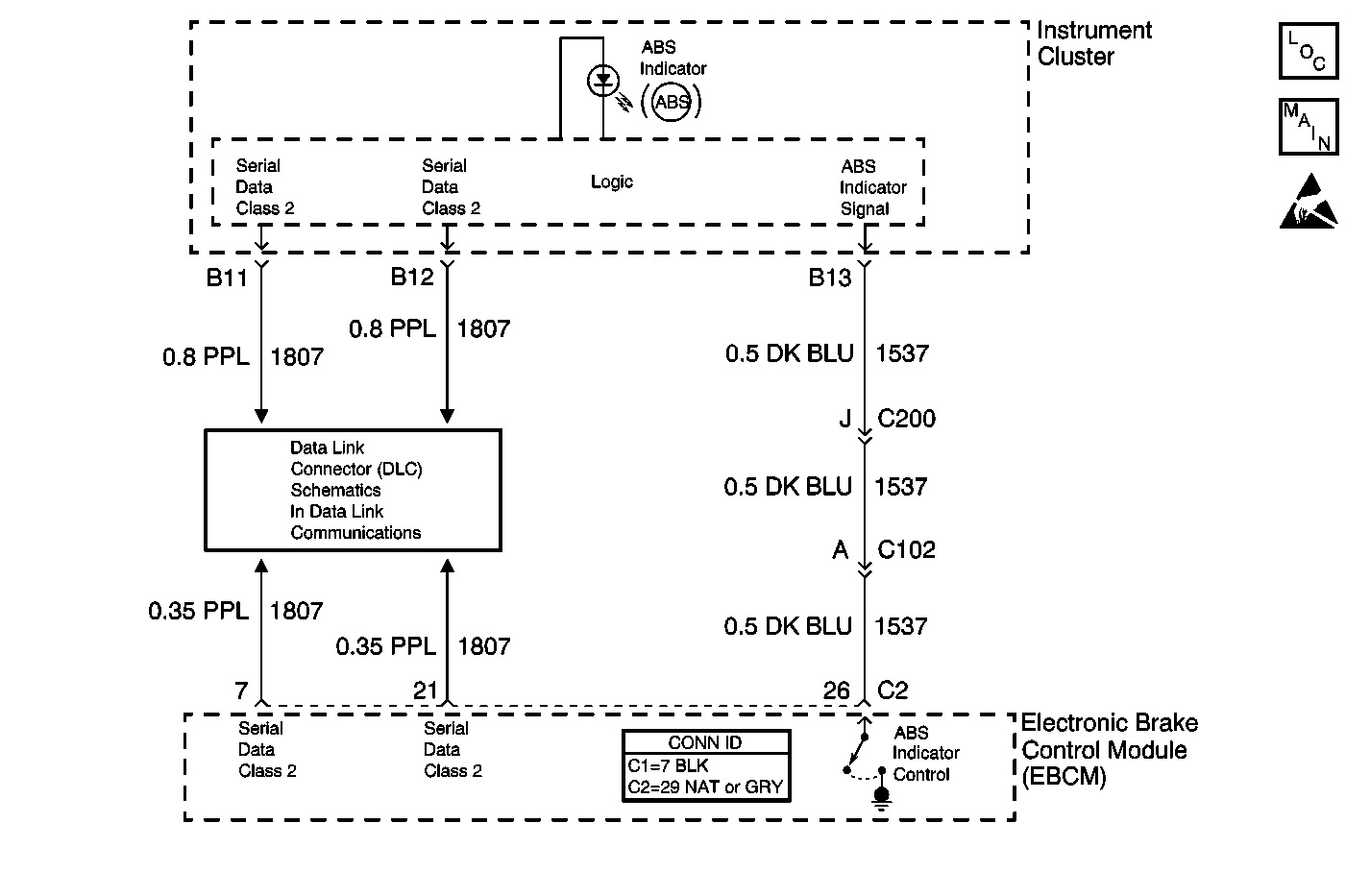
Circuit Description
The instrument cluster controls the operation of the ABS indicator. The electronic brake control module (EBCM) reports the desired status of the ABS indicator via serial data messages. The ABS indicator signal circuit is a back-up reporting circuit to the serial data messages. The EBCM supplies ground through the circuit when the ABS is operating properly. When there is a problem with ABS that should turn on the ABS indicator, the EBCM opens the ABS indicator signal circuit. If there is a problem with the ABS serial data messages, the instrument cluster uses the ABS indicator signal to determine if the ABS indicator should be illuminated. Using the serial data messages and back-up circuit, the instrument cluster decides whether to turn on the ABS indicator.
Conditions for Running the DTC
The EBCM commands the indicator OFF.
Conditions for Setting the DTC
The ABS indicator signal circuit voltage is greater than 4.5 volts for 2 seconds.
Action Taken When the DTC Sets
| • | The ABS remains functional. |
| • | The ABS indicator remains OFF. |
Conditions for Clearing the DTC
| • | The condition for the DTC is no longer present and the DTC is cleared with a scan tool. |
| • | The electronic brake control module (EBCM) automatically clears the history DTC when a current DTC is not detected in 100 consecutive drive cycles. |
Diagnostic Aids
A possible cause of this DTC is a short to battery in the ABS indicator signal circuit.
Test Description
The numbers below refer to the step numbers on the diagnostic table.
-
This test uses the scan tool to check the normal state of the ABS indicator signal circuit.
-
This test ensures that the instrument cluster can operate the ABS indicator.
Step | Action | Value(s) | Yes | No | ||||||
|---|---|---|---|---|---|---|---|---|---|---|
1 | Did you perform the ABS Diagnostic System Check? | -- | Go to Step 2 | |||||||
With a scan tool, observe the ABS Warning Indicator parameter in the DRP/ABS/TCS/TIM data list. Does the scan tool display Off? | -- | Go to Step 3 | Go to Step 4 | |||||||
Does the ABS indicator illuminate during the bulb check? | -- | Go to Step 4 | Go to Step 6 | |||||||
4 |
Important: If equipped with TIM, removing battery voltage or ground from the EBCM
will result in the following conditions.
Did you find and correct the condition? | -- | Go to Step 9 | Go to Step 5 | ||||||
5 | Inspect for poor connections at the harness connector of the EBCM. Refer to Testing for Intermittent Conditions and Poor Connections and Connector Repairs in Wiring Systems. Did you find and correct the condition? | -- | Go to Step 9 | Go to Step 7 | ||||||
6 | Inspect for poor connections at the harness connector of the instrument cluster. Refer to Testing for Intermittent Conditions and Poor Connections and Connector Repairs in Wiring Systems. Did you find and correct the condition? | -- | Go to Step 9 | Go to Step 8 | ||||||
7 |
Important: Perform the setup procedure for the EBCM. An unprogrammed EBCM will
result in the following conditions:
Replace the EBCM. Refer to Electronic Brake Control Module Replacement . Did you complete the repair? | -- | Go to Step 9 | -- | ||||||
8 | Replace the instrument cluster. Refer to Instrument Cluster Replacement in Instrument Panel, Gauges and Console. Did you complete the repair? | -- | Go to Step 9 | -- | ||||||
9 |
Does the DTC reset? | -- | Go to Step 2 | System OK |
